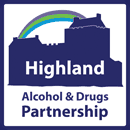Count 14 Case Study
Posted on
The Scottish Government is running the second phase of “Count 14”, our national alcohol awareness raising campaign, from 20 January until 1 March (6 weeks). This builds on the first phase of the campaign which ran in March 2019 for four weeks.
What is Count 14?
The Count 14 campaign aims to increase public awareness of the 14 unit weekly maximum low-risk guidelines, as revised by the UK’s Chief Medical Officers (CMOs) in 2015, and to break this message down by translating 14 units into specific alcoholic drinks. The campaign creative does this by translating 14 units to 7 pints of beer (4% ABV), 7 double measures of spirits (40% ABV) or 6 medium glasses of wine (13% ABV).
Why is SG doing this?
We know that baseline understanding of the CMOs’ guidelines and unit content for drinks is low in Scotland. There is evidence that alcohol mass media campaigns can affect knowledge and attitudes. Our research, demonstrates that three quarters (73%) of those surveyed after Phase One of the campaign were still unaware of the 14 units guideline. This was a significant decrease of 10% from 83% pre-campaign. Looking at drinks specifically: only 12%, 10% and 22% of those surveyed correctly identified 6 pints of beer, 6 medium glasses of wine and 7 double measures of spirits respectively as adding up to 14 units.
We also know that men and those in lower socio-economic groups were less engaged in Phase One and are less likely to correctly identify 14 units as the low-risk guideline. Only 22% of males and 20% of C2DE respondents surveyed identified 14 units as the correct limit compared to 32% of females and 35% of ABC1 respondents.
What is the plan for Phase Two?
Due to the effectiveness of Phase One, we intend to re-use the assets we have developed and communicate through a similar set of media channels. This will include TV (live and on-demand), radio, print and digital (on websites and social media) advertising as well as partnership work with supermarkets, Health Boards and large employers. A case study of Phase One is attached showing examples of the creative assets and our approach.
Due to the results above, Phase Two includes a particular focus on men and those in lower-socio economic groups. For example, we are partnering with Manufacturing/Production companies to target C2D males in particular.
We know that the mass-media campaign in itself is unlikely to be effective in contributing towards reducing health inequalities unless information is specifically tailored to the needs of these groups and supported by additional face to face support by a professional. This is where we see a particular role for local NHS Boards, DPHs and ADPs in driving the campaign forward, alongside our field and partnership work. Local activity e,g. stands distributing materials (unit calculators and measuring cups) at a variety of communities settings delivered, alongside informed conversations, can therefore help to improve the effectiveness of the campaign. A number of local areas did this during Phase One and are planning to do so again, we have supplied pop up stands to support this.
Other examples of valuable local activity include sharing of our activity on local social media channels and display of branded posters in GP surgeries, pharmacies, etc. NHS Boards, DPHs and ADPs have ordered resources and these will be distributed in January.
We have been working with local Public Health leads as well as Alcohol and Drugs Partnerships to amplify the campaign locally and welcome your support in continuing to do so. Please get in touch with any questions or to discuss this further.
